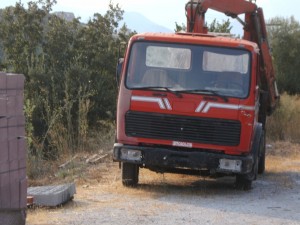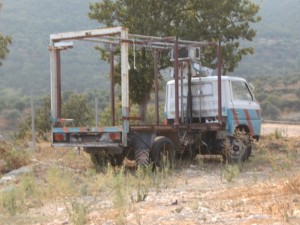 Executing orders given to you has nothing to do with “leadership”. Any machine can functionally translate orders according to a set of rules; you do not need a human being for it.
Executing orders given to you has nothing to do with “leadership”. Any machine can functionally translate orders according to a set of rules; you do not need a human being for it.
All people in “managerial positions” must have real leadership personalities, rather than being just system agents or functionaries.
They should have learned to listen and have a certain degree of empathy.
On top of being realistic and experienced, they should be autonomous and prepared to disobey in a constructive way.
 It goes without saying that they must know how to use their own resources and consequently have sufficient time for their employees. They should give you the (true) impression that they are quite able to cope with their own lives.
It goes without saying that they must know how to use their own resources and consequently have sufficient time for their employees. They should give you the (true) impression that they are quite able to cope with their own lives.
They can and will respond to any question you asked after a very short time, and they have a healthy authority, demanding moral courage. Their policy is an open-door policy and they are glad to see an employee asking for their advice directly. An aura of competence and tolerance surrounds them.
 Well, this sounds quite super-human. However, we must keep in mind that a hundred per cent will never be required in any dimension. And besides: it is the small mistakes that also make leadership personalities human.
Well, this sounds quite super-human. However, we must keep in mind that a hundred per cent will never be required in any dimension. And besides: it is the small mistakes that also make leadership personalities human.
But the enterprise, too, must play along. More and more often, I discover “schizophrenic enterprises”. I mean enterprises where the operative management works coherently and diligently on good solutions, while at the same time the strategic management sends out totally different signals and sets conflicting goals.
 Consequently, the work of the operative management loses in value, and a general air of insecurity develops. Similar to a schizophrenic person, nobody knows what is going on.
Consequently, the work of the operative management loses in value, and a general air of insecurity develops. Similar to a schizophrenic person, nobody knows what is going on.
To me, the demolition of hierarchies seems to be another problem. The 10-step-hierarchy of Siemens was probably not such a bad idea, after all. At least, there were always enough “superiors” who were available for their team when needed.
In those days, the managing directors knew their enterprise and their employees. They had been educated in the enterprise and had a reliable and stable organisational structure. Today, it often seems like this has disappeared.
 These days, the managing directors no longer seem to know the enterprise. As compensation, we have flat hierarchies, even if they tend to be a cheat. Flat hierarchies make leadership harder. The leader is responsible for too many people, which limits his potential.
These days, the managing directors no longer seem to know the enterprise. As compensation, we have flat hierarchies, even if they tend to be a cheat. Flat hierarchies make leadership harder. The leader is responsible for too many people, which limits his potential.
In the era of cost optimization, much that made sense was made redundant. Leadership personalities were considered just as much of an unnecessary overhead as the very important secretaries. These are all mistakes an “ethical enterprise” must not make. In an ethical enterprise, leadership must still function as it does in the classical medium-size enterprise: the boss strolls through all his departments and knows the names of all his employees.
At the moment, I am reading an interesting book called “DIE KUNST LOS ZU LASSEN oder ENTERPRISE 2.0″ (The Art of Letting Go or ENTERPRISE 2.0). I like this book very much, indeed. There is one article where “control” is called detrimental for an enterprise, while “no control” is considered the active and life-preserving leadership strategy for a modern enterprise.
To me, that looks like it fits perfectly into the “ethical enterprise”.
RMD
(Translated by EG)
P.S.
I found the collection of metal rubbish on yesterday’s bike tour of 27 kilometres and 400 metres of altitude difference. Other than that, I was at leisure.

